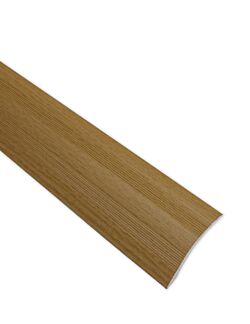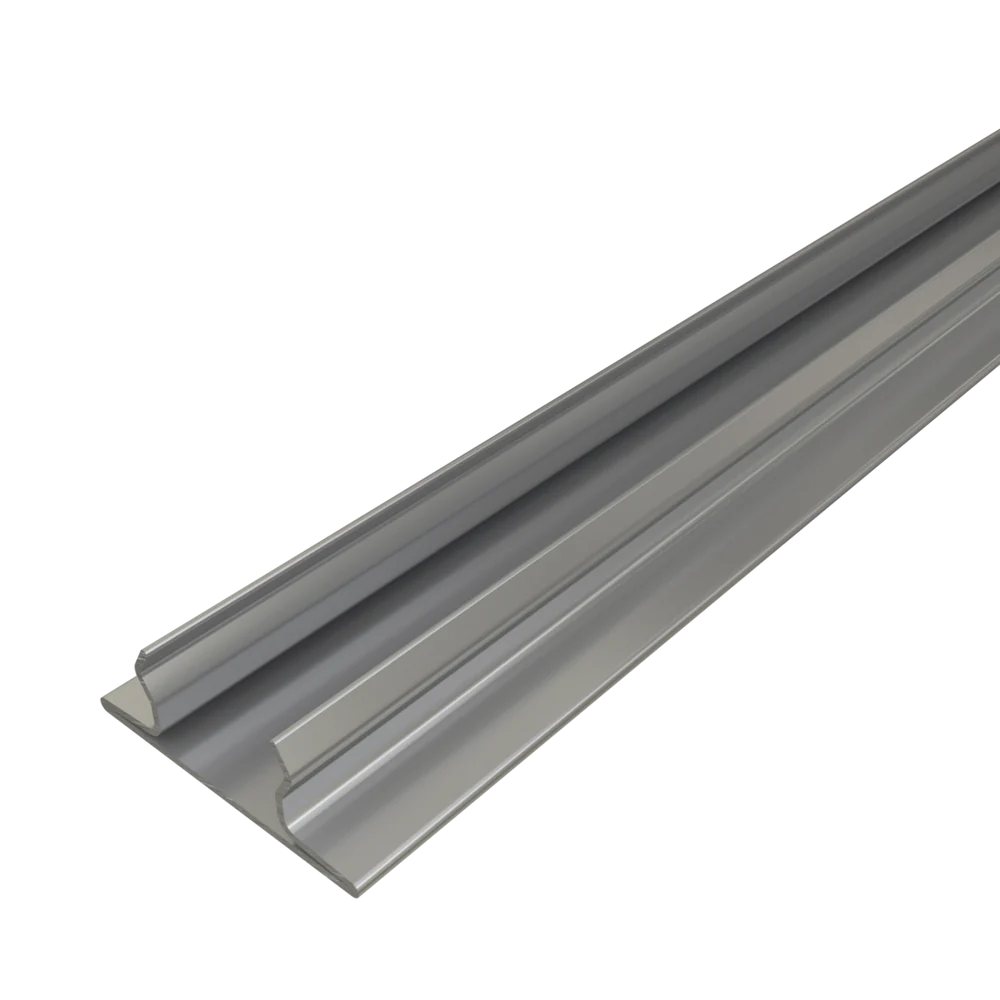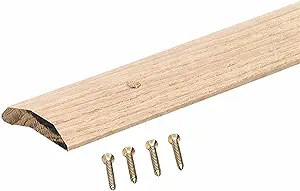Transition strips play a crucial role in flooring, seamlessly connecting different materials and elevating the aesthetics of a space. In this comprehensive guide, we will delve into the various types of transition strips available in the market, their purposes, and essential tips for their installation.
Transition strips serve multiple purposes, making them an indispensable element in flooring projects. They smooth the transition between different flooring materials, enhance safety by preventing tripping hazards, and contribute to the overall aesthetic appeal of a space.
Common Types of Transition Strips
T-Molding
T-molding is a versatile transition strip that plays a crucial role in seamlessly connecting two floors of equal height. Its name is derived from its T-shaped profile, which effectively bridges the gap between different flooring materials. This type of transition strip is commonly used in doorways and entryways, providing a smooth and visually appealing transition. T-molding not only enhances the aesthetics of a space but also serves a practical purpose by preventing wear and damage to the edges of the flooring.
Installation of T-molding involves precision cutting and careful placement. It is crucial to ensure a snug fit to guarantee a secure connection between the two surfaces. The result is a polished and professional transition that not only looks good but also contributes to the longevity of the flooring.

Reducer Strips
Reducer strips are designed to address the challenge of transitioning between flooring materials of unequal heights. When moving from a higher surface, such as hardwood, to a lower one, like carpet or tile, a reducer strip provides a gentle slope, creating a seamless and safe transition. This type of strip is particularly useful in spaces where the aesthetic continuity between different flooring types is desired.
Installing a reducer strip requires careful consideration of the height difference between the two surfaces. Proper measurements and precise cutting are essential for achieving a smooth and visually pleasing transition. Reducer strips not only add a finishing touch to the flooring project but also contribute to the overall safety and accessibility of the space.

Threshold Strips
Threshold strips are indispensable in doorways and entry points where different flooring materials meet. These strips provide a clean and polished transition while preventing tripping hazards and protecting the edges of the flooring. Threshold strips are available in various materials and finishes, allowing for customization to match the overall design and style of the space.
Installing threshold strips involves securing them in place, ensuring a stable and level connection between the two surfaces. The result is a seamless transition that not only enhances safety but also adds a touch of elegance to the transition area. Threshold strips are a practical and aesthetic solution for creating cohesive flooring transitions in both residential and commercial settings.

End Cap Strips
End cap strips, also known as square nose transitions, are designed to address the transition from flooring to a vertical surface, such as a staircase or a fireplace hearth. These strips provide a finished look to the edge of the flooring, creating a clean and visually appealing transition. End cap strips are often used in spaces where the flooring extends to a higher or lower level, requiring a transition that is both functional and aesthetically pleasing.
Installing end cap strips involves careful measurement and precise cutting to achieve a seamless connection. These strips not only serve a practical purpose by protecting the edges of the flooring but also contribute to the overall design cohesiveness of the space. End cap strips are a versatile solution for creating polished transitions in areas with varying floor levels.

Carpet Transition Strips
Carpet transition strips, also known as carpet bars or gripper strips, are specifically designed to address the transition between carpet and other flooring materials. These strips play a vital role in securing the edges of the carpet, preventing fraying and ensuring a clean transition between different surfaces. Carpet transition strips are available in various profiles, allowing for customization to match the style and design of the space.
Installing carpet transition strips involves securing them along the edge of the carpet and adjacent flooring material. The result is a tidy and secure transition that not only enhances the durability of the carpet but also contributes to the overall aesthetics of the space. Carpet transition strips are a practical and functional solution for creating seamless transitions between carpeted and non-carpeted areas.

DIY Installation Tips
For those embarking on a do-it-yourself flooring project, proper installation of transition strips is essential. Here are some tips to ensure a seamless and professional finish:
Tools and Materials Needed: Before commencing the installation, make sure you have all the necessary tools and materials on hand. This typically includes a saw appropriate for your flooring types, a measuring tape, an adhesive suitable for the specific transition strip, and any additional fasteners recommended by the manufacturer. Having the correct tools ensures a smoother installation process.
Step-by-Step Installation Guide: Each type of transition strip may have specific installation requirements, so it’s crucial to follow a detailed step-by-step guide. Begin by measuring the space accurately and cutting the strip to the appropriate length. Clean the area where the strip will be installed, removing any debris that might affect the adhesion. Apply the recommended adhesive, align the strip properly, and press it into place. If the manufacturer suggests additional fasteners, use them according to the provided instructions.
Common Mistakes to Avoid: Learning from common mistakes can save you time and frustration during the installation process. Some frequent errors include inaccurate measurements, using the wrong type of strip for the flooring materials, or neglecting to secure the strip adequately. Take the time to understand the unique characteristics of the transition strip you’re working with and follow the manufacturer’s guidelines closely.
Inaccurate Measurements: Measure twice, cut once. Ensure precise measurements to avoid issues with the fit and appearance of the transition strip.
Wrong Type of Strip: Each transition strip serves a specific purpose. Using the wrong type may lead to an unsatisfactory finish and compromise functionality.
Inadequate Securing: Whether using adhesive, nails, or screws, ensure the transition strip is securely fastened. Neglecting this step may result in instability and a less durable installation.
Ignoring Manufacturer Instructions: Manufacturers provide specific instructions for a reason. Ignoring these guidelines can lead to installation problems, so carefully follow the provided recommendations.
Final Thoughts
Transition strips are essential components in flooring projects, serving both functional and aesthetic purposes. By understanding the various types available and following proper installation and maintenance guidelines, you can achieve a seamless and visually pleasing transition between different flooring materials in any space.




